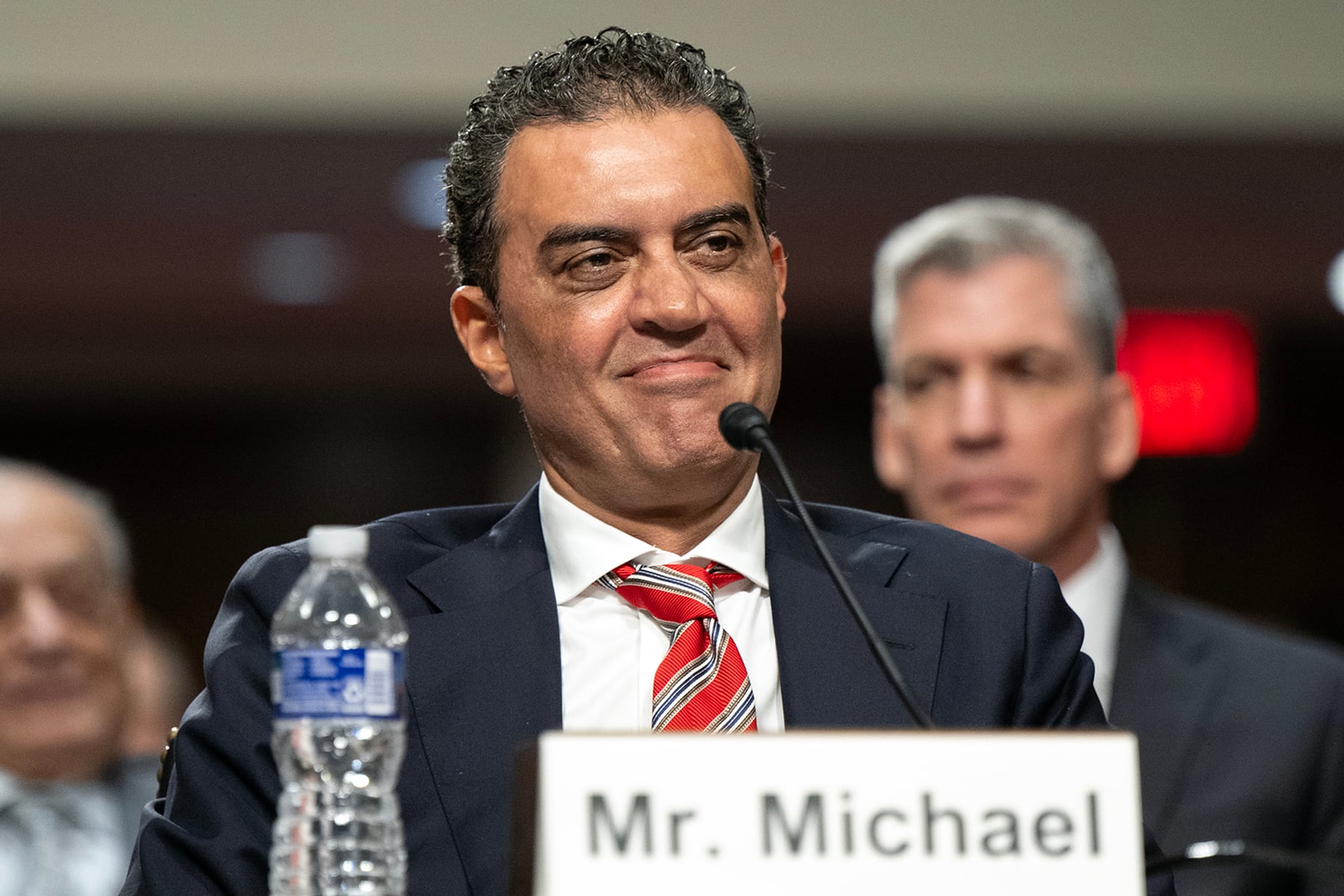The Defense Department’s chief technology officer told reporters Wednesday he doesn’t intend to maintain permanent oversight of the Defense Innovation Unit, adding that the Pentagon is looking for a full-time replacement following the former director’s resignation earlier this week.
Following previous DIU Director Doug Beck’s sudden resignation from the role Monday, the Pentagon announced Undersecretary of Defense for Research and Engineering Emil Michael would lead the organization in an acting capacity. While the decision at least temporarily puts DIU under Michael’s purview, he was adamant the move was not permanent.
“DIU is a separate organization independently created in law with its own mission set,” Michael told reporters on the sidelines of a National Defense Industrial Association conference in Washington, D.C. “I’m acting until we find a full-time person.”
When DIU was first established in 2015 as a Defense Department outpost for Silicon Valley tech firms, it reported to the Pentagon’s head of research and engineering — a construct that senior leaders said impeded its influence. The following year, then-Defense Secretary Ash Carter elevated the office to report directly to him.
By 2018, it was shuffled back within the research and engineering portfolio, where it remained until 2023. At that time, former Secretary of Defense Lloyd Austin again gave it a direct reporting line. Congress codified the office’s structure in the fiscal 2024 National Defense Authorization Act, which states that DIU’s director “shall report directly to the Secretary without intervening authority.”
While Michael won’t permanently wear the DIU director hat, at least for now, the Pentagon did recently expand his office’s scope. The department announced Aug. 20 that the Chief Digital and AI Office, formerly an independent organization, would reside within research and engineering moving forward.
At the time, the Pentagon said the move would “accelerate Department-wide AI transformation.” Michael reiterated that message Wednesday.
“Having it be part of R&E means that it’s part of a larger organization that hopefully has the muscle and the wherewithal to further develop and do bigger partnerships ... and then more easily proliferate that technologies into various areas of the department,” he said.
RELATED

Asked how his organization might spearhead AI advances that could support Golden Dome — a DOD initiative to create an advanced, multi-layered homeland missile defense shield — Michael was careful to note he doesn’t have direct involvement in the project. However, he said his intent is to invest in AI platforms that could be made available for large-scale efforts like Golden Dome, as well as for combatant commands, Pentagon employees and even defense contractors to support their mission.
“It’s really [about] trying to use the latent capability that’s primarily been invested in by the private industry,” he said. “They’ve been putting $300 billion per year into AI, whether it be software development, data centers and so on. So how does the DOD leverage that for an endless list of use cases that are beneficial.”
Along his focus on harnessing AI for defense applications, Michael noted that his team is also crafting a list of critical technology focus areas — a practice that has become a tradition for incoming research and engineering chiefs. He noted that rather than add to current list, which includes some 14 technologies, he’s working to narrow it to include only the department’s highest priorities.
Rather than craft roadmaps for each area, Michael added, he’ll instead call for “sprints” that aim to accelerate broader technology development and adoption.
“It’s a pyramid hierarchy, if you will. These are the most important things I need people to wake up every day thinking about,” Michael said. “I want to communicate that to industry.”
Courtney Albon is C4ISRNET’s space and emerging technology reporter. She has covered the U.S. military since 2012, with a focus on the Air Force and Space Force. She has reported on some of the Defense Department’s most significant acquisition, budget and policy challenges.








